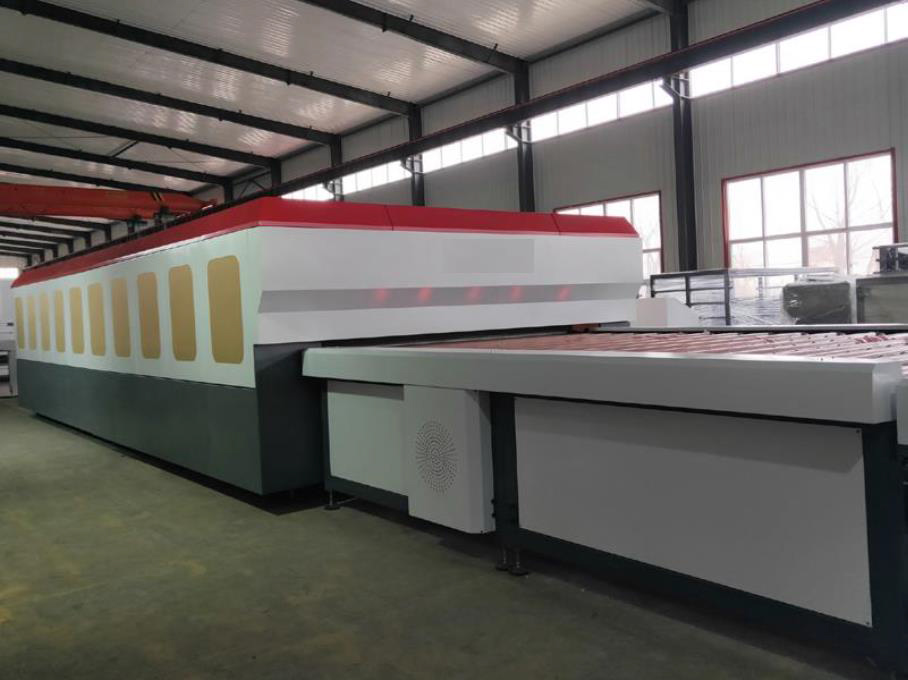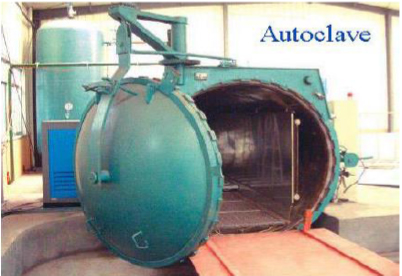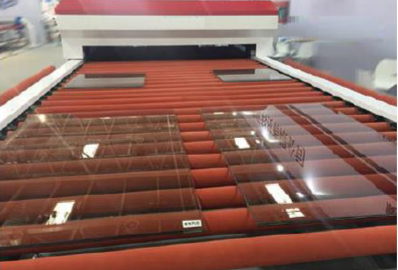
Glass laminating furnace is a professional equipment to produce laminated glass without autoclave. It is able to produce various laminated glass thanks to the advantages of this machine and specific film. It’s workable for with normal PVB film perfectly The processing is controlled through Siemens PLC, all the parameters would be set easily by touch screen. PID output ensure an accurate temperature. The glass is conveyor to furnace with frequency motor. The machine is very easy to operate, just need to load glass on the entrance section, all the processing would be finished by machine self automatically, and the finished glass would be conveyor to unloading section. The furnace is well working with PVB film with high production capacity, the glass would be conveyor to furnace continuously, and around 0 to 15 minutes for each batch, (4mm glass+ PVB fim+4mmglass)so itis able to have bulk production or single pieces. Fully automatic running, the operator just needs to load the assembled glass on loading table, and take off the finished glass from unloading table, other jobs would be well done by the machine automatically. Saving labor, high production efficiency
Max.glass Size:size can be customized as per customer request
glass thickness:3+3mm~ 12+12mm
Control system:PLC witht touch screen
Install power:109.7KW
Heating temperature: 0-160℃
transmission speed:5M/Min—10M/Min
working table height:985±10mm
weight:20T
Voltage: customized
Workable film: transparent /colorful PVB- SGP - EVA film
Workable with normal PVB- SGP – EVA film
Completed autoclave-free, no need the climate room to control humidity
The processing would be finished automatically by computer control
Each 15 minutes/production cycle(4mm+pvb+4mm)
Very flexible for production, suitable for both bulk and single piece production
 |
 |
| 5-6 hours/batch | 10-20 minutes/ batch |
| 400-500sqm/12 hours ( 4+4mm with PVB) | 450-550sqm/12 hours (4+4mm with PVB, 80% loading) |
| Suitable for bulk-production only | Suitable for both bulk production and single piece |
| Dangerous!!! as high pressure request, need to be inspected and permit ted by local safety-production administration on every 6 months. And, need to be run with empty loading once a month, in order to burn the chemical gas where contained inside of autoclave. | No high pressure, no dangerous, no need to inspect, no need to run with ""empty loading "". |
| Need many assistant equipment , such as:roller press machine, screw air compressor, air dyer, air tank, cooling tower, ferry , glass trolley, etc. | No need other assistant equipment, the machine is workable itself. |
| Need to do many foundation construction, such as lower cement pool to install the autoclave and ferry; need a climate room to control humidity; need water pool for cooling etc. | No need any special construction, just the normal workshop with clean room |
| Need to control the humidity | No need to control humidity |
| High Energy Costs. It needs to have 2 steps to work with autoclave, first, it needs to work with roller-pressing machine, the glass would be heat-up to 70-80 degree, then ,gather all the pieces ready after roller press machine, in that case, the glass would be cool down to normal temperature, then it comes to autoclave, but need to heat-up again from normal temperature, it means lost energy because of the roller pressing; and the glass need to be cool down inside of autoclave. It will waste a lot of energy | Low-Energy costs. AGLF is working with only one step, and it works continuously; when the furnace be heat-up to target temperature, it would be under temperature-keeping stage. In that case , it will save much more energy |
| Need 4-5 labors | Need 2 labors |
| Difficult and very costly to move factory. As many foundation construction are necessary; so it would be very costly and difficult to move workshop | Easy and low cost to move factory. Just transport the machine to new workshop, and connect the same. |
| Normal quality | With inspection, the laminated glass processed by AGLF contains much less water than autoclave did, therefore, the adhesion is much higher than the autoclave did. |
| Delamination of the glass after installation. As it works with high pressure during the process by autocJave, therefore, the glass sheers and The PVB film was contacted each other by air force even has gap from tempering , but finished glass still contains tension stress in after the processing, on someday, once the tension stress more powerful than adhesion stress, it will be delaminated! | The AGLF never put high pressure on laminated glass during the processing, the glass sheets and PVB contacted each other gently, in that case, if any problem of the laminated glass, you will see by eyes immediately after processing, otherwise, it would NOT have further problem as delamination. |
| Not possible for thin glass and VIG (vaccum insulated glass) glass | As no pressure, so it works for thin glass and VIG glass |
